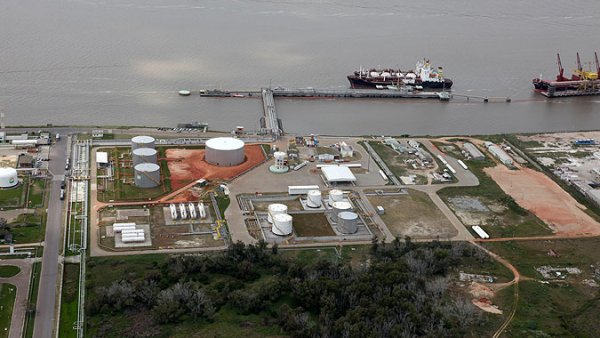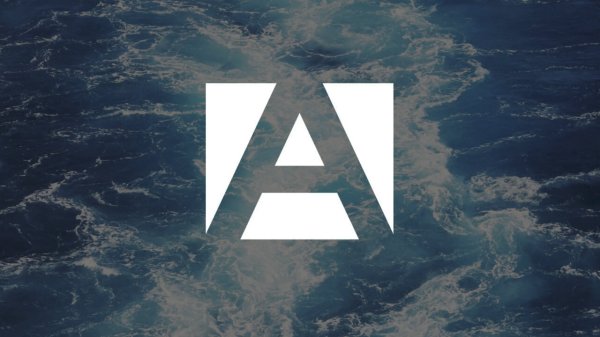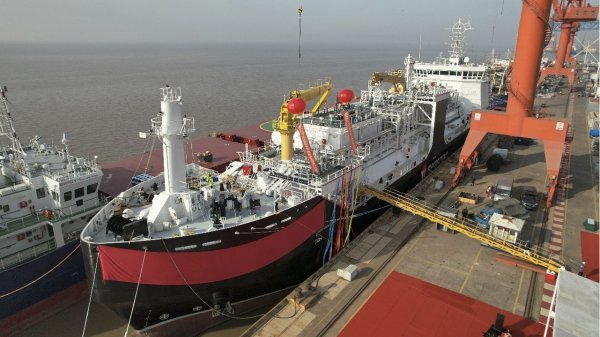Deltamarin signs contracts for LNG-fuelled ship with bunker-saving rotor sails
New Viking Line vessel is said to be 10 percent more energy efficient than the Viking Grace.
Finland's Deltamarin Ltd has signed contracts with China's Xiamen Shipbuilding Industry Co., Ltd (XSI) for engineering and construction support services for Viking Line's newbuild LNG-fuelled ro-pax vessel.
The contracts cover basic and detail design as well as comprehensive project management support and supervision services to the shipyard during vessel construction.
Deltamarin has developed the new vessel concept together with Viking Line, and delivered assistance in the tender and contract phases for the owner.
Deltamarin's sales manager, Nina Savijoki, remarked: "We are very happy about the constructive cooperation with Viking Line. From a naval architectural point of view, they presented us with every concept developer's dream challenge: to come up with a concept that is even more energy efficient in relation to cargo capacity than their MS Viking Grace, one of the most energy-efficient and sophisticated ferries on the market.
"We have received good support from Deltamarin during the concept development and the worldwide yard selection phase, and look forward to continuing the work together with them and Xiamen Shipyard during the vessel construction," said Kari Granberg, NB manager at Viking Line.
Special focus in the concept development was put on hull form development, weight control, energy efficiency (including waste heat recovery) and improvement of the general arrangement. According to Deltamarin, it has succeeded in making the new concept 10 percent more energy efficient than Viking Grace.
Now that the Viking Line ship contract with XSI has been confirmed, Deltamarin says it will continue with the basic and detail design of all disciplines for the yard. Deltamarin is to also support the yard in project management as well as passenger vessel building process requirements and provide supervision services during the production of the newbuilding project.
The value of Deltamarin's contracts with XSI is more than EUR 11 million in total.
The engineering and pre-construction project management support is to be performed mainly at Deltamarin's offices in Finland over an estimated period of 12 months, whilst supervision and other construction support services will be carried out until planned delivery of the vessel in 2020.
Once completed, the vessel is slated to serve the Finland to Sweden route, connecting Turku, Aland Islands, and Stockholm as part of the European Union's Motorways of the Seas project.
The new ro-pax vessel for Viking Line will have a passenger capacity of 2,800 people, and the length of its cargo lanes will be 1,500 metres.
In addition to running on LNG, the vessel will also have two 24-metre-high, bunker-saving rotor sails installed. It is set to be the second Viking Line vessel to be fitted with rotor sails.
As previously reported by Bunker Index in January, another Finnish firm, Norsepower Oy Ltd, is due to install its rotor sail technology on board the LNG-fuelled Viking Grace during the second quarter of 2018. The ferry is set to be retrofitted with one medium-sized Norsepower Rotor Sail unit that is 24 metres in height and 4 metres in diameter, making it the first-ever global LNG/wind electric propulsion hybrid ship.
In 2016, Viking Line managed to decrease its bunker expenses by EUR 9.2 million, or 18.9 percent, to EUR 39.5 million, down from EUR 48.7 million the previous year.
The ferry operator explained earlier this year that the fall was the result of lower average bunker prices combined with "the Group's continued efforts to optimize the bunker consumption of its vessels".
The contracts cover basic and detail design as well as comprehensive project management support and supervision services to the shipyard during vessel construction.
Deltamarin has developed the new vessel concept together with Viking Line, and delivered assistance in the tender and contract phases for the owner.
Deltamarin's sales manager, Nina Savijoki, remarked: "We are very happy about the constructive cooperation with Viking Line. From a naval architectural point of view, they presented us with every concept developer's dream challenge: to come up with a concept that is even more energy efficient in relation to cargo capacity than their MS Viking Grace, one of the most energy-efficient and sophisticated ferries on the market.
"We have received good support from Deltamarin during the concept development and the worldwide yard selection phase, and look forward to continuing the work together with them and Xiamen Shipyard during the vessel construction," said Kari Granberg, NB manager at Viking Line.
Special focus in the concept development was put on hull form development, weight control, energy efficiency (including waste heat recovery) and improvement of the general arrangement. According to Deltamarin, it has succeeded in making the new concept 10 percent more energy efficient than Viking Grace.
Now that the Viking Line ship contract with XSI has been confirmed, Deltamarin says it will continue with the basic and detail design of all disciplines for the yard. Deltamarin is to also support the yard in project management as well as passenger vessel building process requirements and provide supervision services during the production of the newbuilding project.
The value of Deltamarin's contracts with XSI is more than EUR 11 million in total.
The engineering and pre-construction project management support is to be performed mainly at Deltamarin's offices in Finland over an estimated period of 12 months, whilst supervision and other construction support services will be carried out until planned delivery of the vessel in 2020.
Once completed, the vessel is slated to serve the Finland to Sweden route, connecting Turku, Aland Islands, and Stockholm as part of the European Union's Motorways of the Seas project.
The new ro-pax vessel for Viking Line will have a passenger capacity of 2,800 people, and the length of its cargo lanes will be 1,500 metres.
In addition to running on LNG, the vessel will also have two 24-metre-high, bunker-saving rotor sails installed. It is set to be the second Viking Line vessel to be fitted with rotor sails.
As previously reported by Bunker Index in January, another Finnish firm, Norsepower Oy Ltd, is due to install its rotor sail technology on board the LNG-fuelled Viking Grace during the second quarter of 2018. The ferry is set to be retrofitted with one medium-sized Norsepower Rotor Sail unit that is 24 metres in height and 4 metres in diameter, making it the first-ever global LNG/wind electric propulsion hybrid ship.
In 2016, Viking Line managed to decrease its bunker expenses by EUR 9.2 million, or 18.9 percent, to EUR 39.5 million, down from EUR 48.7 million the previous year.
The ferry operator explained earlier this year that the fall was the result of lower average bunker prices combined with "the Group's continued efforts to optimize the bunker consumption of its vessels".

|
IMO approves pricing mechanism based on GHG intensity thresholds
Charges to be levied on ships that do not meet yearly GHG fuel intensity reduction targets. |
|
|
|
||

|
VARO Energy expands renewable portfolio with Preem acquisition
All-cash transaction expected to complete in the latter half of 2025. |
|
|
|
||

|
NYK trials biofuel in milestone coal carrier test
Vessel is used to test biofuel for domestic utility company. |
|
|
|
||

|
H-Line Shipping orders LNG bunkering vessel
Vessel with 18,000-cbm capacity to run on both LNG and MDO. |
|
|
|
||

|
How to engineer and manage green shipping fuels | Stanley George, VPS
Effective management strategies and insights for evolving fuel use. |
|
|
|
||

|
Swedish government bans scrubber wastewater discharges
Discharges from open-loop scrubbers to be prohibited in Swedish waters from July 2025. |
|
|
|
||

|
MAN Energy Solutions achieves 100% load milestone for ammonia engine
Latest tests validate fuel injection system throughout the entire load curve. |
|
|
|
||

|
Petrobras secures ISCC EU RED certification for B24 biofuel blend at Rio Grande
Blend consisting of 24% FAME is said to have been rigorously tested to meet international standards. |
|
|
|
||

|
Stolt-Nielsen to fully control Avenir LNG with acquisition
Share purchase agreement to buy all shares from Golar LNG and Aequitas. |
|
|
|
||

|
Bureau Veritas supports launch of CIMC SOE's LNG bunkering vessel
Handover of Seaspan Energy's cutting-edge 7,600-cbm vessel completed. |
|
|
|
||
Related Links
- · Energy flow tool could cut fuel costs by up to 6%: Deltamarin [Insights]
- · Viking Line signs LOI to build LNG-fuelled passenger vessel [Insights]
- · Deltamarin awarded EPCM contract for gas-ready ferries [Insights]
- · Viking Line reports drop in bunker costs, income [Insights]
- · Viking Line ferry set to save fuel with rotor sail retrofit [Insights]
- · Finland [Directory]

